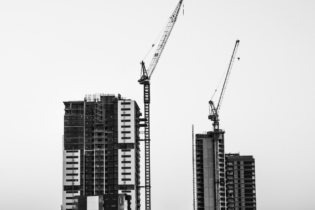 Africa’s ambitious development goals require the construction of infrastructure and related mega-projects as a priority. With the IMF forecasting that 11 of the world’s 20 fastest growing economies will be in Africa by 2017.
Africa’s ambitious development goals require the construction of infrastructure and related mega-projects as a priority. With the IMF forecasting that 11 of the world’s 20 fastest growing economies will be in Africa by 2017.
“This has to be viewed in context however,” explains Odendaal. “In order to maximise the sustainability of concrete structures – including infrastructure megaprojects – we have to understand the interdependencies from ‘cradle to grave’ in the design phase, during construction and at end-of-life. We additionally need to unpack how these impact the levels of energy savings achievable during a structure’s life cycle and use.”
While the industry has worked to quantify “embodied” impact of materials used in infrastructure development, effectively measuring the “whole-life” impact and full effects of the infrastructure’s existence during its usage phase continue to challenge the industry. “This type of measurement is however critical if we’re to meet future targets of ‘zero net-energy’ buildings and infrastructure for Africa. Understanding the full impact versus benefit of concrete is therefore central to this equation.” Benefits of concrete Developers are able to benefit from their use of concrete based on its first cost, long term economic benefits, energy efficiency, lower maintenance, and overall operating costs, as well as opportunities for future reuse should the occupancy of the building change. “Again here, if various players in the collective value chain work together from planning through design and into development, it’s relatively easy to ensure that the strength, durability and natural thermal mass of concrete can be harnessed to create structures that require little maintenance, offer high durability and have high operating energy efficiency.” Odendaal argues that value-adding partnerships will prove critical in order for this level of sustainability – and sustainable infrastructure development – to be realised however. “For Africa to meet her collective development goals and needs, players will need to work as a collective. They will need to take a long-term view of projects in order to unlock economies of scale and sustainability at all levels – ensuring that the infrastructure they create puts society on the road to a sustainable future,” he concludes.






